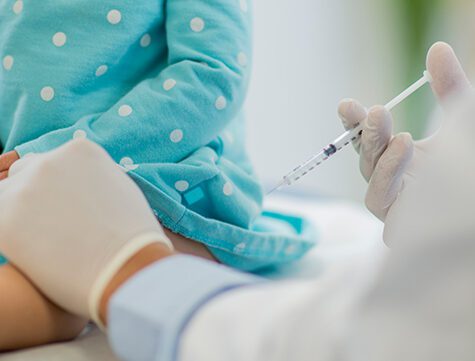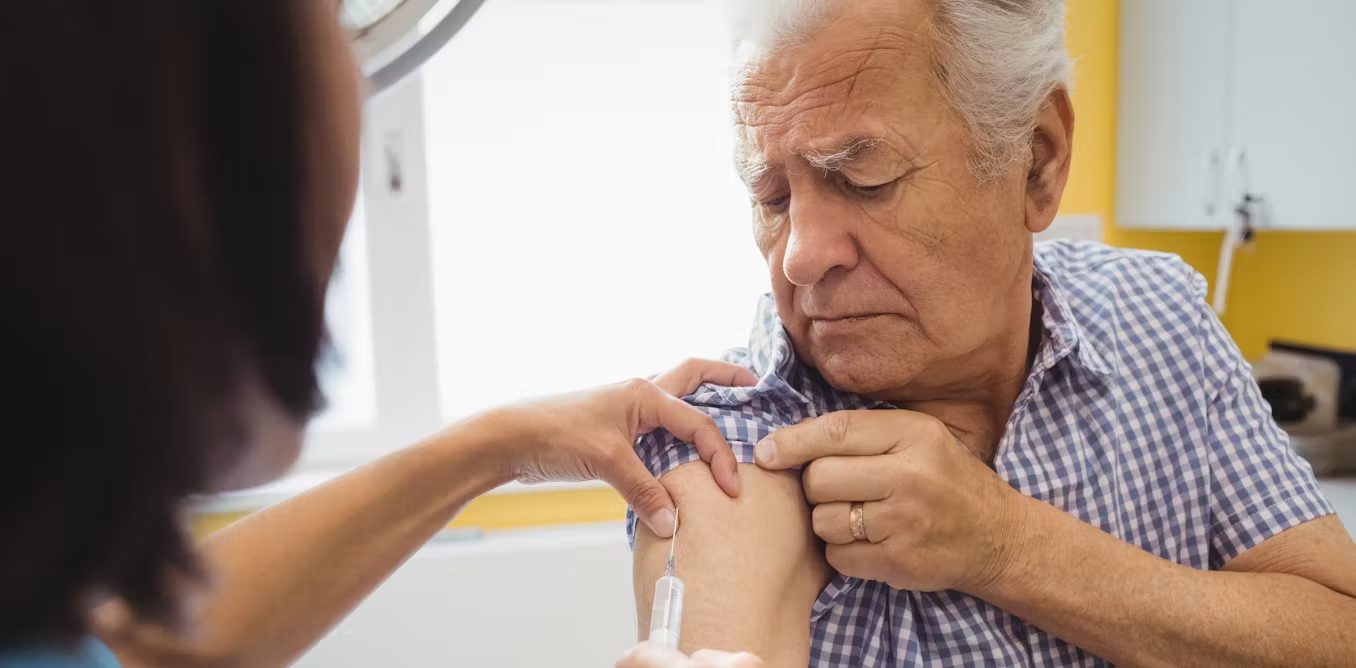An Unsettling Rise: Understanding Meningococcal Disease in Australia
June 20, 2023
A rise in Meningococcal in Australia
A public health concern that has been largely controlled by vaccination, is witnessing an unnerving resurgence in Australia. The escalating incidence of Invasive Meningococcal Disease (IMD) has called for a renewed understanding of its nature, causes, and preventive measures among health professionals and young families.
While vaccination has significantly contributed to making meningococcal a rare disease in Australia, recent data suggests a concerning uprise in the number of cases compared to the 2021, and further building on the rise in cases seen in 2022. This alarming trend prompts a critical question: What is behind this surge and how can our healthcare communities effectively safeguard the population?
With an intention to tackle this pressing issue, a broad-based collaboration is taking place. A diverse assembly of medical experts, patient advocacy groups, Meningitis Centre Australia, and global healthcare initiatives, have united to raise community awareness about Invasive Meningococcal Disease (IMD). This powerful coalition has embarked on an educational initiative focused on highlighting the signs, symptoms, and risk factors associated with IMD—a rare yet potentially devastating disease.
It’s worth noting that the IMD incidence saw a significant downturn during the restrictive lockdown measures enacted in 2020-2021 to curb the spread of the COVID-19 pandemic. While these restrictions primarily aimed to limit the spread of the coronavirus, they inadvertently served to confine the transmission of IMD, restricting movement and travel. However, with the gradual reopening of Australian society and the subsequent increase in population mobility, IMD circulation within the community has seen an upward trajectory. This escalation poses a pronounced risk to children and adolescents, who are identified as the most susceptible demographic to the disease.
Professor Robert Booy, an esteemed paediatric infectious diseases specialist from the University of Sydney, emphasises the critical importance of IMD awareness among families. Recognising the signs and symptoms of this invasive disease could potentially mean the difference between life and death, especially as society resumes its normalcy.
He says, “Given we are experiencing an increased level of population movements, I encourage everyone, especially parents of young children, to be talking to their doctor about invasive meningococcal disease.” His words underline the importance of keeping the conversation about IMD alive, especially as the disease can affect anyone, and the cases are on a concerning rise both locally and globally. “Confusing the symptoms with a common cold for example, can put the life of loved ones at risk,” says Dr Booy.
What is Invasive Meningococcal Disease (IMD)
Invasive Meningococcal Disease (IMD) is a rare but potentially deadly bacterial infection, attributable to a bacterium known as Neisseria meningitidis. This bacterium resides harmlessly in the nasal and throat passages of about 1 in 10 individuals, known as ‘carriers’. However, in certain instances, these bacteria can invade the body, leading to a spectrum of illnesses collectively termed as meningococcal disease.
Globally, the majority of meningococcal disease cases are instigated by six serogroups or types of Neisseria meningitidis — A, B, C, W, X, and Y. In total, there are 13 known serogroups capable of causing the disease, but A, B, C, W, and Y are considered the most prevalent. In the Australian context, serogroups B, W, and Y are chiefly responsible for most cases of meningococcal disease.
The infection is classified as an urgent notifiable condition, and is especially daunting as it can evolve rapidly, with ‘golden hours’ of treatment between 12 and 24 hours of symptom onset, essential to providing the best possible care for improved outcomes. Indeed, as many as 1 in 5 survivors may experience severe long-term complications, including brain damage, deafness, or limb amputation. Meanwhile, up to 1 in 10 of those infected may not survive the disease, underscoring the importance of early detection and treatment.
Meningococcal disease is non-discriminatory with respect to age; it can strike individuals across all age groups. Nevertheless, certain demographics like infants and young children (those less than 2 years of age), followed by adolescents aged between 15-19 years, demonstrate heightened susceptibility to the disease.
The early onset of meningococcal disease may present symptoms such as high fever and lethargy, which are easy to misinterpret as indications of a common cold, thus posing a challenge to early diagnosis. A spectrum of symptoms manifest in babies, young children, and adolescents, including vomiting, pale blotchy skin, cold extremities, and light sensitivity. Infants may additionally exhibit a high-pitched moaning cry or a bulging fontanelle. In certain cases, a distinctive purple rash may appear as an advanced symptom of the infection. However, its absence should not be misinterpreted as a sign of non-infection.
Who is at risk
Meningococcal disease, while capable of affecting any age group, does present a heightened threat to specific cohorts. Individuals who have had substantial or prolonged exposure to someone already infected are particularly susceptible.
Within Australia, certain demographics have been identified as having an increased risk:
– Infants and young children, notably those under two years of age.
– Adolescents between the ages of 15 to 19 years.
– Those with substantial or prolonged exposure to an individual with meningococcal disease. This group includes household members and intimate partners.
– Individuals who have not undergone immunisation against the disease.
– Those classified as ‘special risk’ and immunocompromised patients. This includes children aged six weeks and over, as well as adults with high-risk conditions such as impaired or absent spleen function, a complement component disorder, HIV, those undergoing or scheduled to receive eculizumab treatment, or recipients of haematopoietic stem cell transplants.
Route of Transmission
The transmission of meningococcal bacteria primarily occurs via the exchange of respiratory and throat secretions, including saliva. Transmission typically necessitates proximity, as through coughing or kissing, or prolonged exposure. It is important to underscore, particularly for general public reassurance, that these bacteria are less contagious than those causing common ailments such as the cold or influenza, and they are not typically contracted through casual contact or shared airspace.
Individuals at an elevated risk of infection often have had extended or intimate contact with a patient diagnosed with meningococcal disease. This group comprises:
– Co-inhabitants or household members
– Roommates or individuals sharing a living space
– Anyone with direct exposure to a patient’s oral secretions, which can include intimate partners
It is standard protocol for those in close contact with a meningococcal patient to receive prophylactic antibiotics to prevent the onset of the disease. Public health departments rigorously investigate each case of meningococcal disease to identify all close contacts and ensure appropriate administration of prophylaxis. This is an integral part of our collective response to contain and manage the spread of this disease.
Recommendations for Healthcare Professionals
It is crucial for healthcare professionals to maintain a high degree of suspicion for the disease in anyone presenting with compatible symptoms throughout Australia during this resurgence of cases.
In cases of suspected meningococcal disease, immediately initiate cultures from sterile sites, including blood, via your routine pathology provider. Additionally, consider arranging for Polymerase Chain Reaction (PCR) and cerebrospinal fluid (CSF) testing of samples at your closest diagnostic unit or hospital.
Remember, meningococcal disease is classified as an urgent notifiable condition. The relevant department in your state must be informed immediately and definitely within 24 hours of initial diagnosis or clinical suspicion, whether it is presumptive or confirmed.
Prompt diagnosis and initiation of the correct antibiotic therapy are essential to mitigate the severity of illness and prevent potential fatalities. Empirical treatment strategies for bacterial meningitis, in line with the current edition of Therapeutic Guidelines, offer adequate protection against meningococcal infection.
In conclusion, it is our collective responsibility as healthcare professionals to stay alert, be well informed, and act swiftly in diagnosing and managing potential cases of meningococcal disease. This vigilance is paramount in our effort to protect our communities and limit the impact of this devastating disease.
CDC (2022) Meningococcal disease, Centers for Disease Control and Prevention. Available at: https://www.cdc.gov/meningococcal/index.html (Accessed: 03 June 2023).
Department of Health. Victoria, A. (2022) Health alert on meningococcal disease, Department of Health. Victoria, Australia. Available at: https://www.health.vic.gov.au/health-alerts/health-alert-on-meningococcal-disease (Accessed: 03 June 2023).
Primary Health Network (2023) NSW Health reports a surge in meningococcal disease cases, Primary Health Network. Available at: https://thephn.com.au/news/nsw-health-reports-a-surge-in-meningococcal-disease-cases (Accessed: 03 June 2023).
What are meningitis & meningococcal (2022) Meningitis Centre. Available at: https://meningitis.com.au/about-the-disease/what-are-meningitis-septicaemia/ (Accessed: 03 June 2023).












